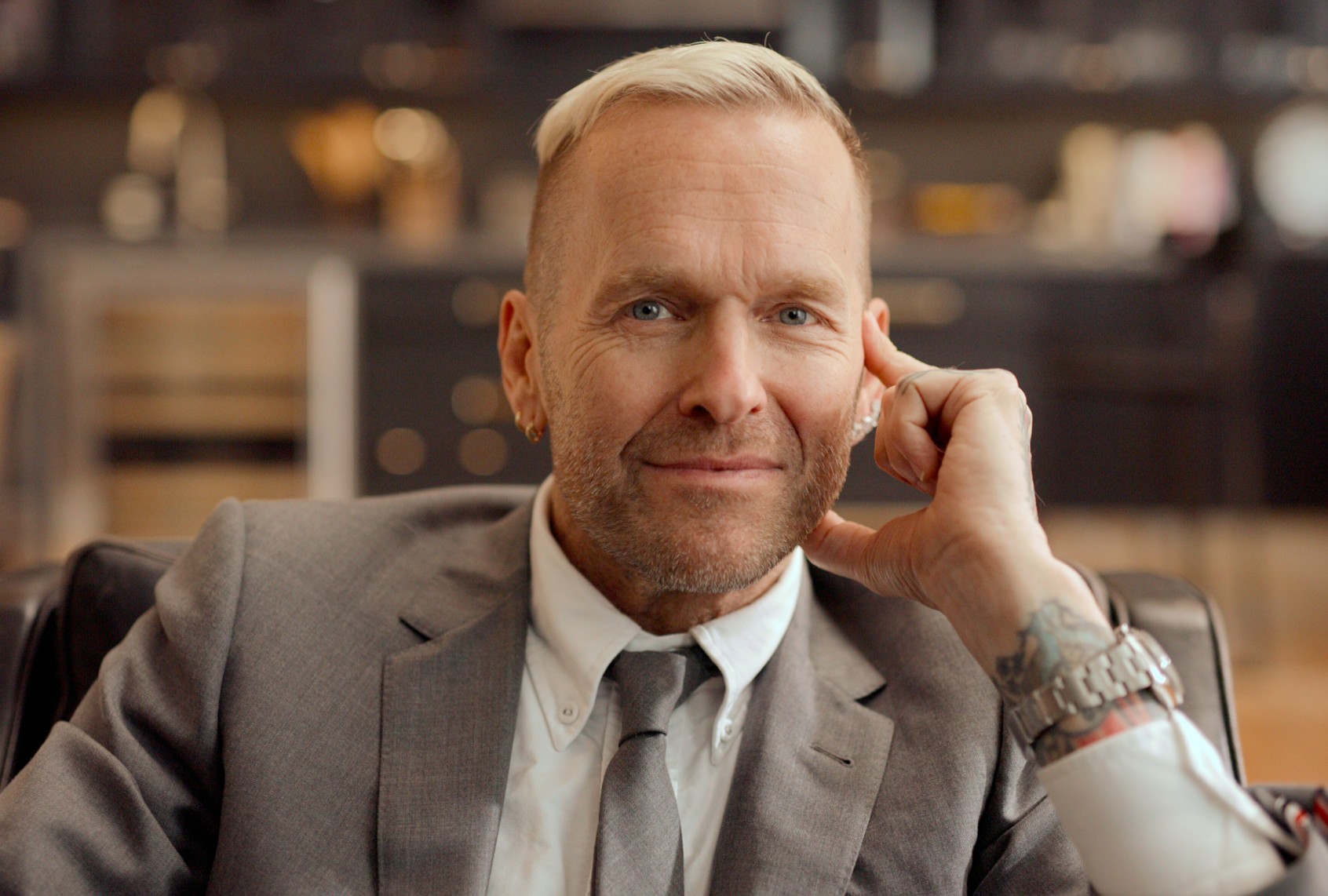As you might have heard, Jillian Michaels does not appear in “Fit for TV: The Reality of Biggest Loser.” If you weren’t set to come off well in a docuseries examining what went wrong in the show that made you famous, you’d pass, too.
Besides, as they say in the fitness biz, the results speak for themselves. Michaels is now one of the MAHA movement’s favorite fitness gurus and hosts a podcast where she expresses her passions about a number of subjects. Lately that’s included Donald Trump’s drive to whitewash any of the Smithsonian Institution’s Black history exhibits that make white people uncomfortable.
A recent episode of CNN’s “NewsNight with Abby Phillip” peaked in a screech-fest of far-right talking points as Michaels confidently dispensed misinformation downplaying the lasting impact of chattel slavery in America. Few Black folks haven’t been hit with the supposed newsflash that institutionalized slavery isn’t unique to America, but when Michaels busted out with, “Do you realize that . . . less than two percent of white Americans owned slaves?” it confirmed a few things.
Jillian Michaels’ absence from “Fit for TV” isn’t noticeable because the docuseries positions “The Biggest Loser” as aligning with her view that certain types of people aren’t worthy of consideration or empathy.
One, whoever typed up her notes left out a digit. A study by the National Bureau of Economic Research places the rate of white Southern households that owned enslaved people at around 21%. The Economic History Association sets the number at just under 25%, accounting for all Southerners. I’m simply citing these numbers because nobody did in the viral clip of that exchange.
(Netflix) “Fit for TV: The Reality of the Biggest Loser”
What we should be wondering, though, is why Michaels was presented as an authority on anything outside of a weight room. Her expertise in that space is questionable, too: years ago, she was hit with several lawsuits related to claims about her diet supplements’ effectiveness. Anyway, Michaels’ absence from “Fit for TV” isn’t noticeable because the docuseries positions “The Biggest Loser” as aligning with her view that certain types of people aren’t worthy of consideration or empathy.
For the 18 seasons that aired between 2004 and 2020, the show normalized the shaming and mockery of fat people under the banner of inspirational programming. The healthy carrot dangling at the end of that stick was $250,000 and the title of “biggest loser,” both awarded to the person who could drop the most weight within a matter of months.
As executive producer J.D. Roth put it, his producers weren’t searching for happy folks. They sought contestants who were overweight and unhappy. Presumably, that made them easier to push around. Conflict and abuse generated high ratings in the short term, but the show was terrible for contestants’ long-term health: A 2016 study found that its extreme methods destroyed contestants’ metabolism.
Michaels wasn’t alone in mistreating contestants. Fellow “Biggest Loser” trainer Bob Harper, who appears in “Fit for TV,” also screamed verbal threats and mockery at the people who came to him desperate to shed weight. As he impishly testifies, the producers encouraged this abusive treatment and reveled at seeing contestants collapse, fall off equipment, and sometimes vomit. This constituted drama, and in the world of TV, that’s the only metric that matters.
Ironically, “Fit for TV: The Reality of The Biggest Loser” isn’t admirable television either. Like the show it criticizes, it is an exercise in rubbernecking, capitalizing on the contestants’ anguish and suffering instead of offering healthy media analysis in hindsight as medicine. Entirely by accident, it also accentuates the pattern “The Biggest Loser” established for influencer culture to follow later. Michaels and Harper claimed a level of authority on healthy living that they didn’t have, and the docuseries alleges they dispensed advice that contradicted what the show’s medical expert, Dr. Robert Huizenga, told participants.

(Netflix) Bob Harper in “Fit for TV: The Reality of the Biggest Loser”
Huizenga wasn’t entirely innocent, as we see in scenes of him yelling at contestants for the sin of having, say, dangerously high cholesterol or diabetes. But he didn’t dispense caffeine pills to participants as Michaels did. (This and other allegations led Michaels to tell TMZ that she’s thinking about suing Netflix, the docuseries’ producers, Huizenga and Harper.)
While many societal developments contributed to the rising disdain for accredited expertise, perpetuating questionable regimens and advice on broadcast TV did plenty to help that along. Syndicated TV made stars out of Phil McGraw and Mehmet Oz, establishing them as experts through Oprah Winfrey’s blessing. The most popular health influencers feed the social media beast, but Dr. Oz and Dr. Phil are the OGs when it comes to spreading pseudoscientific information.
Unsurprisingly, both are making the most of this administration’s proclivity for positioning TV stars as voices of authority. Dr. Phil is showing up at ICE raids. Dr. Oz, no stranger to medical quackery, is in charge of overseeing Medicaid and Medicare services.
Neither wields the magnetism of a visibly fit movie star best known for playing Thor in Marvel’s “Avengers” movies. Chris Hemsworth is a health influencer in the same way that every celebrity with a shredded physique is a health influencer. Pick a movie with a bulked-up lead, and I can guarantee there is a YouTube tutorial associated with it. Hemsworth monetized his appeal by founding a fitness app.
But his participation in “Limitless with Chris Hemsworth” changed his concept of what it means to be fit after a test conducted during one of its episodes revealed his genetic predisposition for developing Alzheimer’s disease. That realization produced a lot of shocking clickbait, and it also lent the season a weight that offset the kookiness inherent to any mega-celebrity’s wellness venture. Still, the first “Limitless” had its “Goop”-y moments, such as an indigenous ceremony that was criticized for allegedly disrespecting a sacred site.
While many societal developments contributed to the rising disdain for accredited expertise, perpetuating questionable regimens and advice on broadcast TV did plenty to help that along.
The sequel, “Limitless: Live Better Now,” doesn’t pull back on centralizing the star. Darren Aronofsky, returning as its executive producer on the series, knows what he’s got here. But it’s better about presenting Hemsworth as an example, not the exemplar, of what functional fitness can look like.
He’s still testing his limits by doing things only a wealthy, famous actor can do, like flirting with reputational disaster by performing with a pop star. But he takes on these massive dares under the guidance of accredited authorities, such as a neuroscientist who advises him that learning a new skill is a great way to maintain cognitive function and a sharp memory. As part of this workout, she throws in a challenge that involves executing choreography with members of Cirque de Soleil. It requires Hemsworth to combine brain power with strength.

(National Geographic/Laura Radford) Chris Hemsworth in “Limitless”
As for pushing his physical limits, in an episode titled “Pain,” Hemsworth submits to a rigorous gauntlet alongside members of South Korea’s special forces not as a flex, but to test how effectively he can reframe his relationship to his chronic back ailments. Then, in “Risk,” he commits to climbing a 600-foot dam in the Swiss Alps as an exercise in hyperfocus. He trains hard, mentally prepares himself and still buckles to fear.
The effect here isn’t simply to wow us by Hemsworth taking some bear mace to the face or threatening to plummet from a frightening height, although those possibilities also make good TV. “Live Better Now” emphasizes the scientific benefit of scaring yourself a little every day. Anyone can do what Hemsworth does here — on a feasible scale, of course. Ed Sheeran wouldn’t let just any old schmo accompany him on “Thinking Out Loud” in front of 70,000 people, especially on an instrument they’ve only played for a few weeks.
Start your day with essential news from Salon.Sign up for our free morning newsletter, Crash Course.
The show’s point is that you or I can and should pick up a hobby or enroll in a class to spark those neurons out of complacency. Most gyms have rock walls. Every state in America has a complicated hiking trail. The science behind Hemsworth’s adventures validates their worth, and Hemsworth’s willingness to confess to his insecurities makes conquering whatever is holding us back, even if that’s simply getting to the gym, seem doable and worth doing.
That’s where “The Biggest Loser” failed its contestants and viewers most acutely. Probably not from NBC’s perspective, given how entirely our culture bought into its messaging and methods. At the height of its popularity, product licensing for the show generated tens of millions of dollars. Nowadays, a gazillion podcasts sell powders and capsules promising to optimize your pump. Whether they work, or are healthy, is a secondary concern. That host you like vouches for them, and that’s good enough for most people.

(National Geographic/Evan Paterakis) Chris Hemsworth in “Limitless”
Somewhere along the way, though, American wellness, like our politics, became a binary concept. You’re either fit or fat, strong or weak, brimming with health or on the verge of death. Most headlines related to the Make America Healthy Again movement are food related, but there’s also plenty of extreme (and extremist) ideology running rampant in the wellness world.
“The Biggest Loser” placed the dominant “no pain, no gain” philosophy in a glaring light by endorsing mistreatment as a form of motivation. That Hemsworth advocates a benevolent, smarter way through “Limitless: Live Better Now” makes it easier to take its lessons to heart. Maybe we’d be less obsessed with hurting each other if we stopped punishing ourselves first.
“Fit for TV: The Reality of the Biggest Loser” is streaming on Netflix. “Limitless: Live Better Now” is streaming on Disney+ and Hulu, and premieres Monday, August 25 on National Geographic.
Read more
about this topic




























